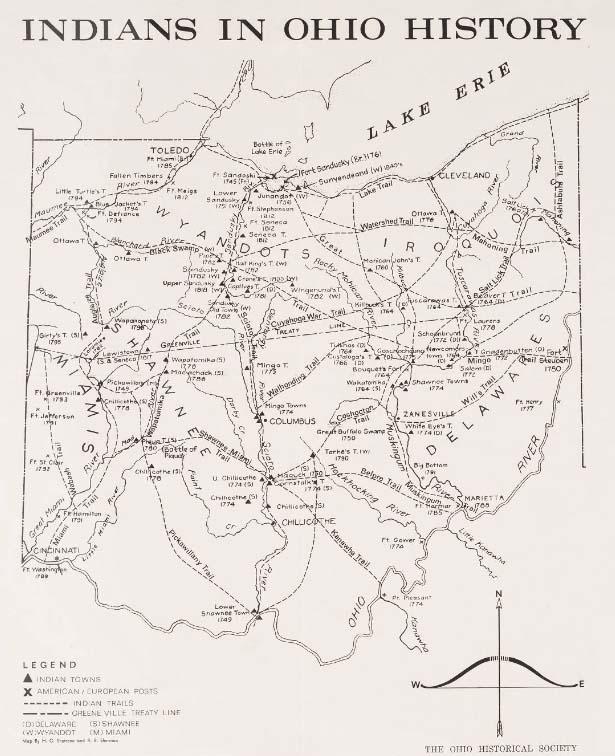
Ohio’s First Humans
The first humans in what is now Ohio were not Europeans but rather the distant descendants of people who migrated east and south from Asia and began to create complex societies. By the 17th and 18th centuries, the region north of the Ohio River and west of the Appalachian Mountains had become a haven for a number of eastern Indigenous groups who pushed west to avoid war and pursue trade. Their influence continues to be seen throughout our region, evidenced in the diverse place names that linguists have traced to the many Native American groups who lived in or passed through the region.

Place Names Tell a Story
The name “Ohio'' comes from a Seneca (Iroquois) word, which means “good” or “great river.” The state’s major rivers, including the Muskingum and the Miami, continue to bear the names that different Native American groups gave them, written down by European traders, settlers, and early mapmakers.
Lenape or Delaware people forced west by European settlement named the river that begins near Lancaster and meanders through Southeastern Ohio to the Ohio River, “Hokhokken” or “Hokhochen.” This meant “bottle” or "gourd-shaped," an apparent reference to the shape of the waterfall near its source. English-speaking settlers called it the Hockhocking River, and by the 19th century, most Athenians knew it simply as the “Hocking River.”
The names of 14 of Ohio’s 88 counties draw from Native American words, including Ashtabula (Algonquian), Coshocton (Delaware), and Pickaway (Shawnee). Other counties are named after entire groups like the Huron, Ottawa, Seneca, Tuscarawas, and Wyandot.

